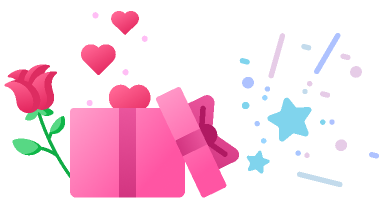Easter, or the Resurrection of Christ, is a very important holiday for every Christian, "a celebration of celebrations." It symbolizes the salvation of the human race and the opportunity for everyone who believes in Jesus Christ to enter Paradise (the Kingdom of God).
Easter is the feast of Life, for the Lord returned eternal life to people. Easter is a holiday of Joy, because through His Resurrection the Lord freed everyone from hell, where, after the fall of Adam and Eve, all mankind was doomed to fall. The family table for Easter in Ukraine is prepared with special solemnity and certainly decorated with flowers. The main place on the festive table is occupied by Easter and krashanki laid on greenery. In addition, every Ukrainian hostess prepares traditional and family-favorite dishes. When the production of gift art Easter eggs was banned, Easter continued to be celebrated with 'krashenki' (eggs decorated in one or more colors), 'pysanky' (painted with ornaments), the tradition of making which was strong in the western regions of Ukraine, and 'skrobanks'. This is a special technique for decorating eggs, when the pattern is scratched out with one or another sharp tool. The living art of the wooden Easter egg was concentrated in the remote villages of the Trans-Volga region - Polkhovsky Maidan and Krutse. The main theme of the painting is a floral ornament combined with pictorial elements: trees, a river, the sun, houses, birds. Traditional motifs and plots were images of a cockerel or a hen, the sun, etc. Only the craftswomen of Krutz were not afraid in Soviet times to write 'XB' on eggs, depict churches and in every possible way indicate that the egg is Easter. Whatever the culinary treat on the table, it is customary to start dinner with Easter cake. Even the crumbs of this bread that fell on the floor should never be thrown into the trash. The cut off pink salmon was traditionally preserved as a talisman that brings happiness. There are a lot of Easter fun. The most popular now is the game of cue ball, when children, and not only, choose Easter eggs and knock them one on the other. Whose breaks, he is the loser. He who died on Easter is considered very happy, since it is on this day that the gates of paradise open, and the soul goes there without any judgment. On Holy Saturday, in the evening, the hostesses prepare a festive basket. Food is placed in a wicker basket, the basket is covered with a festive embroidered towel with the inscription "Christ is Risen!"
In the Easter basket, be sure to put eggs and paska, other dishes - if desired. Believers on Easter night try not to sleep so as not to miss the Resurrection of Christ.
Closer to midnight, with festive baskets, in festive attire, believers come to the temple for the festive night liturgy (each temple sets the start time of the festive divine service according to the internal schedule and quarantine conditions!). Those who cannot stand for a long time, because the liturgy is long, are allowed to take small folding chairs with them.
Eating before the end of the service is not blessed. Only in the morning, after the consecration of the baskets, do the faithful go home to break their fast and rest at the festive table. On Saturday night, after suffering on Golgotha and death, Christ rose from the dead. He came out of the tomb, the entrance to which was littered with stones, without violating the seal that the head of the Sanhedrin placed after the burial of Jesus. Even the guards did not immediately realize that they were guarding an empty tomb. According to their recollections, a major earthquake occurred on the night from Saturday to Sunday. An angel descended from heaven, rolled away the stone of the tomb and sat on these stones. The angel was like lightning, and his clothes were whiter than snow. The guards got scared and fled in all directions.
After the Resurrection, the Lord appeared to people 4 times.
Quick Search

Prices & Services
Letters from 2$
Fast Gift Delivery
2-way Video Chat
5 Membership Levels
View all rates
